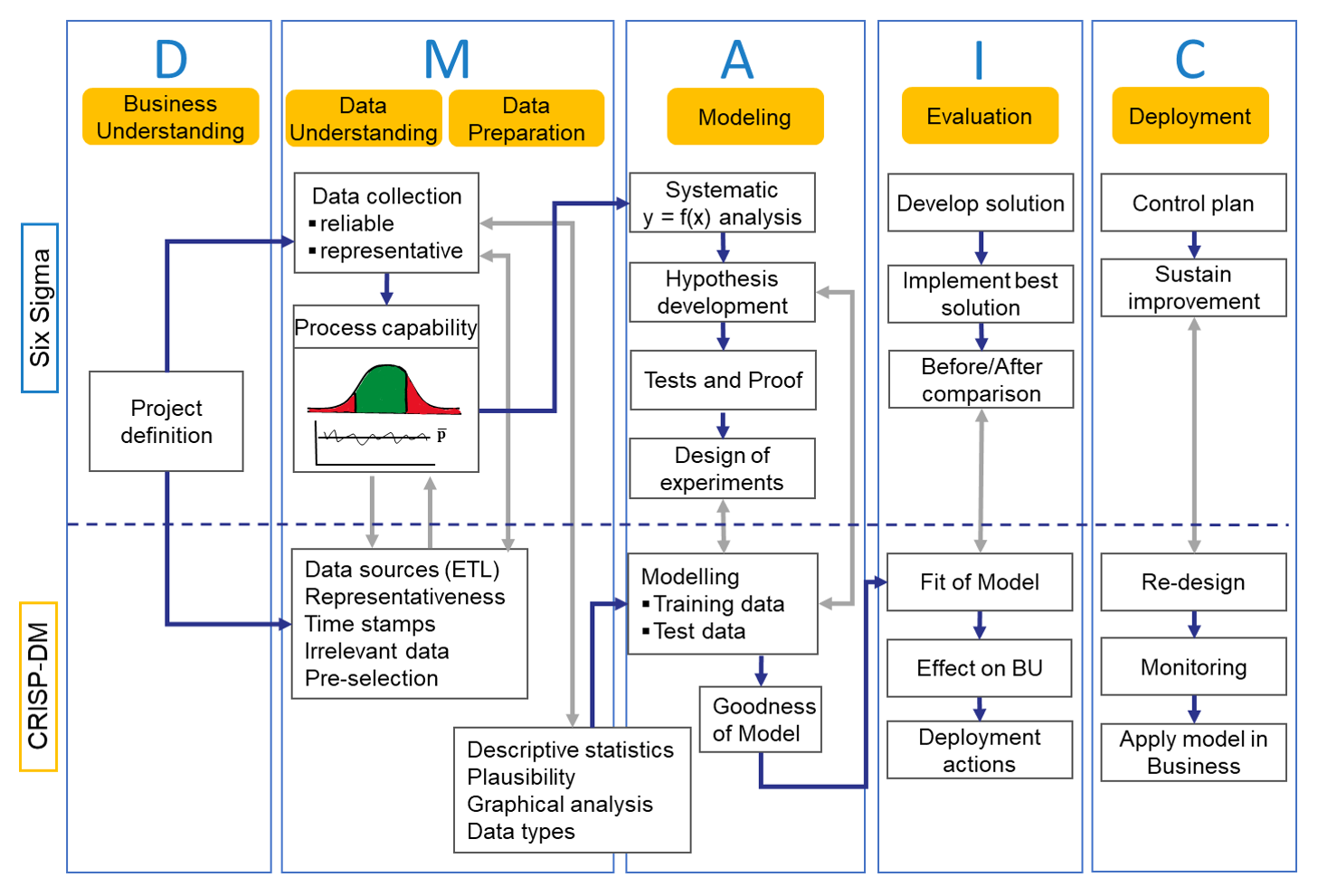In multiple-process manufacturing, achieving process robustness is a challenge. The key performance indicator is often influenced by hundreds of factors, while part-specific quality constraints increase complexity.
Six Sigma, a methodology for process and product quality improvements, was developed at Motorola in the mid-80s and was soon after adopted by other American companies such as Allied Signal, IBM, and Hewlett-Packard. Meanwhile, the Six Sigma approach has enabled companies throughout the world and across sectors to achieve massive bottom-line results.
Today, interconnected machines and systems recording huge amounts of heterogeneous data makes data analysis more complex. This is creating a new paradigm for the Six Sigma methodology: Statistical tools and software programs commonly used in improvement projects may no longer work.
This increased complexity, involving a multitude of additional process variables, also pushes experts to their limits as factors that were not even considered initially may significantly influence quality.
Data-driven tools, which have gained momentum through Industry 4.0, can provide a remedy here. And yet small and medium-sized companies might be reluctant to take the step into digitization because they lack a strategy or because the high investments for a complete transformation are too daunting.
Often, there is a lack of know-how for the introduction and a lack of trained personnel to operate the digital solutions in day-to-day business. However, digitization does not need to be a costly and resource-intensive full-scale transformation. Every organization has a different starting point, and there is no “one size fits all” concept. The key here is to find an approach that enables the organization to take steps toward digitization according to their individual needs and at their own pace.
Align digital transformation to business goals for full potential
Many organizations, especially large enterprises, have already embarked on their digital transformation journey. There is no doubt that big data analytics and other data-driven technologies have enormous potential for improving processes and products or services. However, digital transformation projects must be aligned to business goals to fully exploit the potential.
The project is much more likely to succeed if there is a strategy and plan in place. Those in charge of operational excellence should be enabled to combine process knowledge with technological advancements: Implementing a technical solution alone does not automatically result in an improvement for the business.
Especially when dealing with problems in a highly complex environment, a systematic approach is needed to define the right goals and KPIs that can be achieved and, more importantly, sustained.
The Cross Industry Standard Process for Data Mining (CRISP-DM) provides a general and widely used model but lacks effective methods for deployment. According to a survey on kdnuggets.com, most participants confirmed that less than 20% of models developed are also deployed in real practice. Six Sigma provides a framework (DMAIC, DFSS, etc.) and structured approach to successfully execute data-driven initiatives.

KNIME partners with mts ConsultingPartner to combine the benefits of a structured approach with the capabilities of digital technology. Their concepts offer a tailored integration of methodology, process knowledge, data science and technological capabilities, while KNIME offers cutting-edge data analytics solutions.
Look out for upcoming contributions from mts ConsultingParter around Six Sigma solutions on the KNIME Hub.

With long-standing expertise in deploying Six Sigma for various sectors, mts ConsultingPartner has made it their mission to help organizations harness the power of digital technologies to drive scalable improvements and retain their competitive edge. Their expertise covers the full deployment of Lean Six Sigma and Design for Six Sigma, and, beyond that, a systematic holistic change to integrate digital capabilities. The mts roadmaps represent a unique value proposition to provide companies with both a strategy and a plan for operational excellence initiatives.
To empower organizations to fully exploit the possibilities of digital technologies, mts has developed a new curriculum that includes KNIME as a statistical and analytics tool: Six Sigma Analytics.
